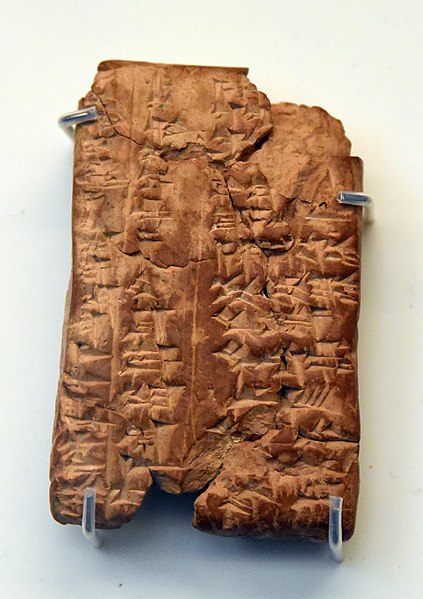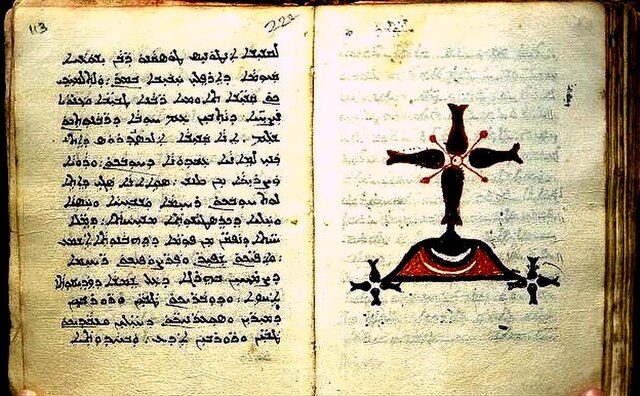The ancient Aramaic alphabet was used to write the Aramaic languages spoken by ancient Aramean pre-Christian tribes throughout the Fertile Crescent. It was also adopted by other peoples as their own alphabet when empires and their subjects underwent linguistic Aramaization during a language shift for governing purposes — a precursor to Arabization centuries later — including among the Assyrians and Babylonians who permanently replaced their Akkadian language and its cuneiform script with Aramaic and its script, and among Jews, but not Samaritans, who adopted the Aramaic language as their vernacular and started using the Aramaic alphabet, which they call "Square Script", even for writing Hebrew, displacing the former Paleo-Hebrew alphabet. The modern Hebrew alphabet derives from the Aramaic alphabet, in contrast to the modern Samaritan alphabet, which derives from Paleo-Hebrew.
Aramaic inscription from Tayma, containing a dedicatory inscription to the god Salm
The Kandahar Bilingual Rock Inscription, a Greek and Aramaic inscription by the Mauryan emperor Ashoka at Kandahar, Afghanistan, 3rd century BC
Aramaic is a Northwest Semitic language that originated in the ancient region of Syria and quickly spread to Mesopotamia, the southern Levant, southeastern Anatolia, Eastern Arabia and the Sinai Peninsula, where it has been continually written and spoken in different varieties for over three thousand years.
This clay tablet represents a classroom experiment; a teacher imposed a challenging writing exercise on pupils who spoke both Babylonian-Akkadian and Aramaic. The pupils had to use traditional syllabic signs to express the sounds of the Aramaic alphabet. c. 500 BC. From Iraq
The Carpentras Stele was the first ancient inscription ever identified as "Aramaic". Although it was first published in 1704, it was not identified as Aramaic until 1821, when Ulrich Friedrich Kopp complained that previous scholars had left everything "to the Phoenicians and nothing to the Arameans, as if they could not have written at all".
Syriac inscription at the Syro-Malabar Catholic Church's Major Archbishop's House in Kerala, India
Late Syriac text, written in Madnhāyā script, from Thrissur, Kerala, India (1799)






